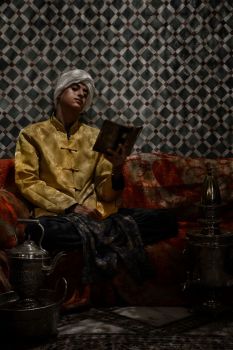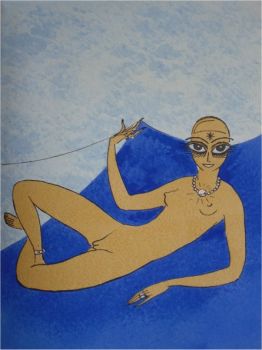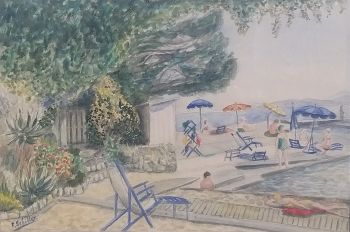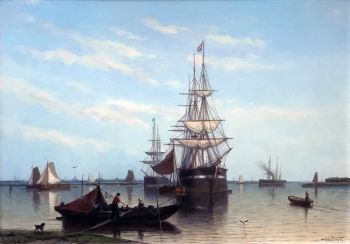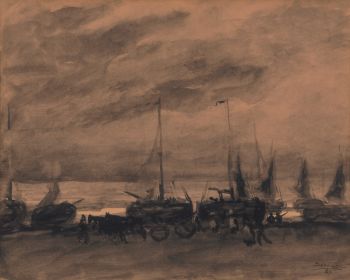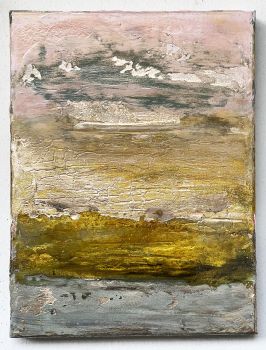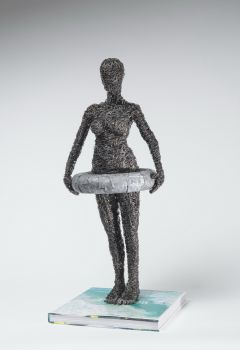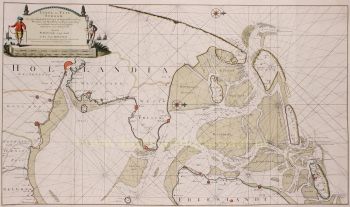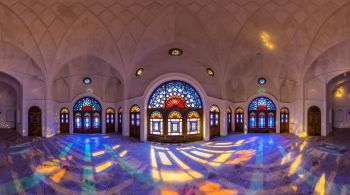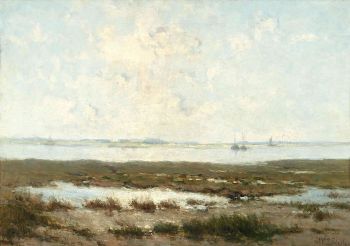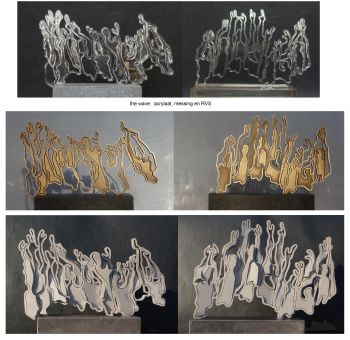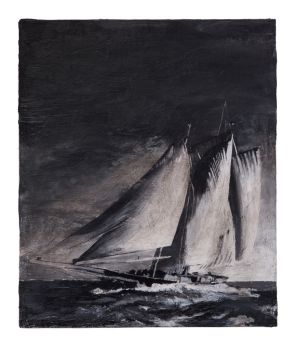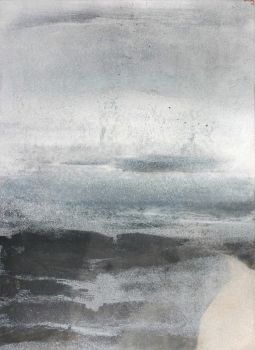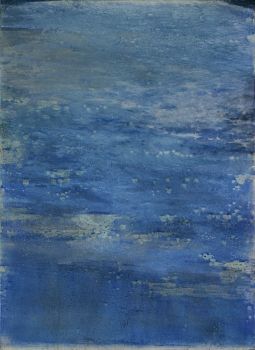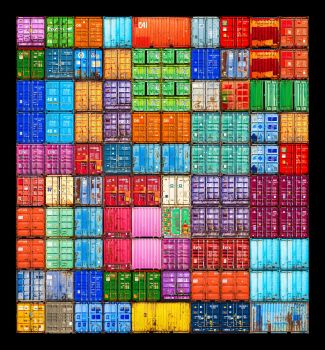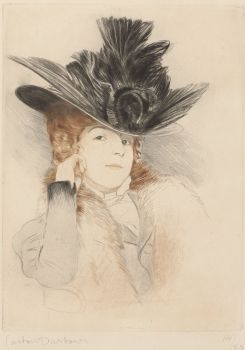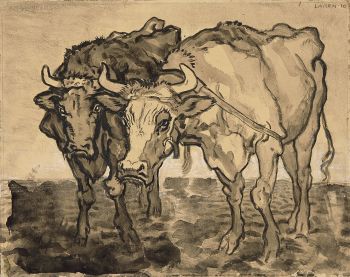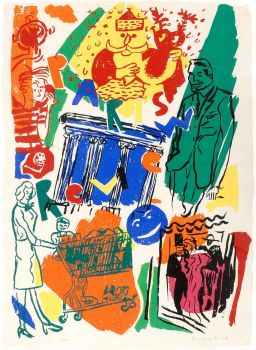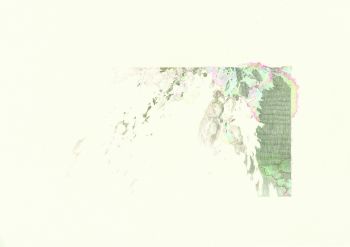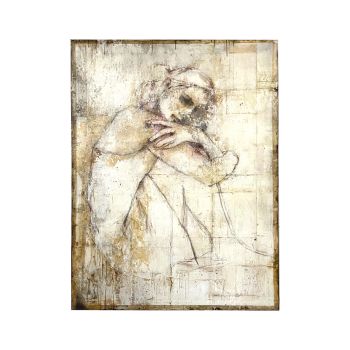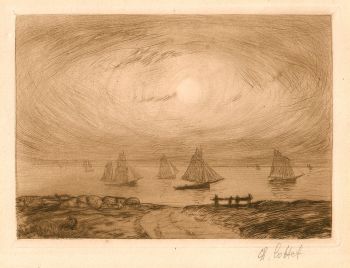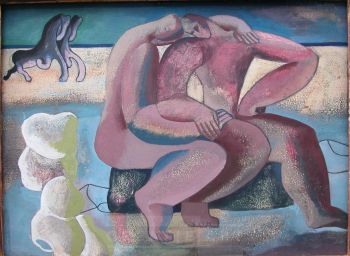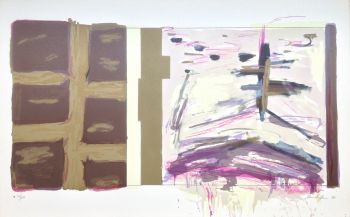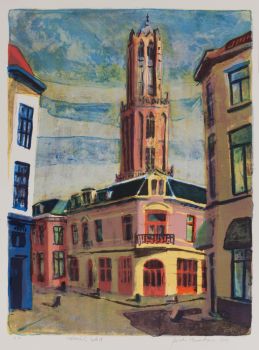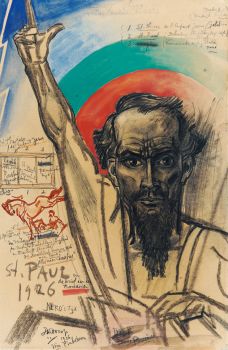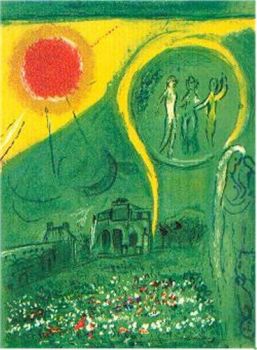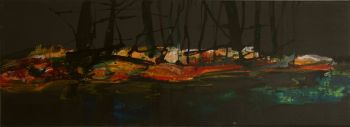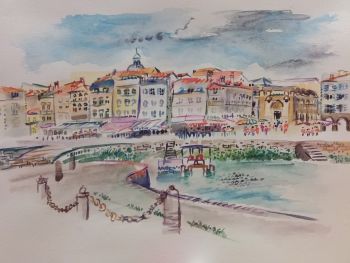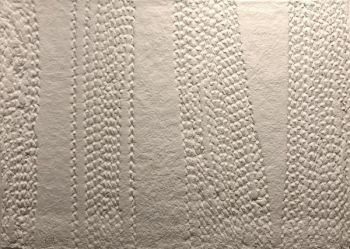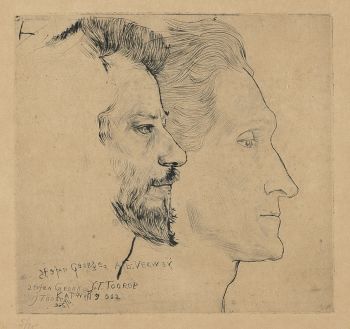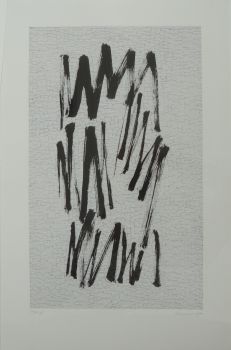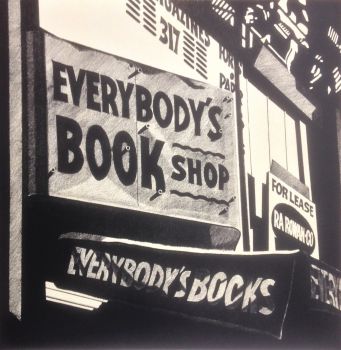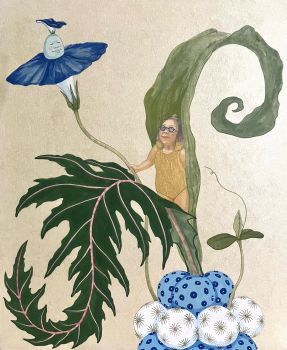A Danish traveller in Kuwait, Saudi-Arabia and Bahrain,meets Mubarak al-Sabah and Ibn Saud, presenta 1913
Barclay Raunkiaer
InchiostroCarta
Attualmente non disponibile tramite Gallerease
- A proposito di opere d'arteGennem Wahhabiternes land paa kamelryg. Beretning om den af det Kongelige Danske Geografiske Selskab planlagte og bekosterde forskningsrejse i Ost- og Centralarabien 1912.
Copenhagen, Gyldendalske boghandel, Nordisk forlag, 1913. 8vo. With a frontispiece showing the author in Arab garb, 88 illustrations in text, most of them reproductions of drawings and photographs by the author, and a folding map loosely inserted in a pocket at the end. Publisher's green cloth.
First and only edition, in the original Danish, of an account of a journey through the Arabian peninsula. Sponsored by the Royal Danish Geographical Society, Barclay Raunkiaer (1889-1915) set out to penetrate the hitherto unexplored deserts of south-east Arabia. Although he came equipped with a modest amount of scientific instruments and a camera, the use of these became almost impossible. The Arabs looked on foreigners with suspicion and Raunkiaer could use his camera only with great risk at certain unwatched moments (p. 12). At the beginning of 1912, he reached the town of Kuwait, where he stayed at the palace of Sheikh Mubarak. Since it was Mubarak's policy to keep Kuwait free of foreign interference, it took some active lobbying of the British envoy to convince the Kuwaitis that Raunkiaer was a harmless traveller. After that, it seems he enjoyed a certain amount of freedom, as numerous photographs testify, including one of pearl fishers and a portrait of Sheikh Mohammed. Raunkiaer was very impressed by the volume of trade in Kuwait, which he considered to be the most important trading centre on the east coast of Arabia.
In Kuwait, Raunkiaer became seriously ill, but his tuberculosis was undiagnosed. After a period of rest, he travelled further to Riyadh. As the first western traveller in the city in half a century, Raunkiaer was graciously received by Ibn Saud. After a short stay in Riyadh, Raunkiaer followed a caravan that consisted mostly of 150 pearl-fishers bound for Bahrain. During a stay in Hofuf, where the book ends, Raunkiaer's health became worse and he sailed to Bahrain to recuperate. From there he travelled back to Copenhagen via Bombay. After a few years working for the East Asiatic Company, Raunkiaer died from tuberculosis.
Shortly after the appearance of the Danish edition, the book was translated into German. T.E Lawrence, who considered it to be one of the "readable Arabian books", helped facilitate an English translation in 1916, privately printed by the Arab bureau in Cairo.
With a dedication by the author to the Danish historian of religion Ditlef Nielsen (1874-1949) and a few annotations in pencil in the final chapter. Binding slightly worn along the edges, with a small stain on the title. Endpapers foxed with the text browned; some small random pen marks at the lower margin of p. 47. The map with a few tears along the folds, most of them expertly repaired; a very good copy.
Facey, Kuwait by the first photographers, pp. 50-51; "Danish expedition to Arabia", The geographical journal XLIV (1914), pp. 85-86. - A proposito di opere artistaAnders Christian Barclay Raunkiær (11 novembre 1889 – 13 giugno 1915) è stato un esploratore e scrittore danese, morto molto giovane. Barclay Raunkiær è nato a Copenhagen come unico figlio dell'ecologa vegetale Christen C. Raunkiær e dell'autore Ingeborg Raunkiær. Dopo aver terminato il liceo nel 1908, iniziò a studiare all'Università di Copenaghen. Ha accompagnato il padre in Tunisia e in altri paesi del Mediterraneo dal 1909 al 1910. Qui ha studiato la geografia culturale dell'agricoltura tunisina, in particolare l'irrigazione. Per conto della Royal Danish Geographical Society, ha viaggiato attraverso l'Arabia orientale dal 1911 al 1912. Ha lasciato Copenaghen nel novembre 1911 per il Kuwait via Istanbul e Baghdad. Dal Kuwait, è andato con una carovana a Riyadh e di nuovo alla costa del Golfo Persico via Hofuf al Bahrain. Tornò via Mumbai e Trieste a Copenaghen, arrivando nel giugno 1912. Lasciò l'università e prese lavoro nella Compagnia dell'Asia orientale. Tuttavia, il viaggio gli era costato la salute. Morì a Copenaghen di tubercolosi, all'età di venticinque anni.
Artwork details
Categoria
Soggetto
Materiale e Tecnica
Related artworks
Tilmanus Nicolaus Maastricht
Missale Romanum con fornimenti d'argento olandesi1788 - 1792
Prezzo su richiestaJacob J. Roosjen SRI
Antonie Derkinderen
Memory book Exhibition of Dutch Painting1892
Prezzo su richiestaKunsthandel Pygmalion
Engelbert Kaempfer
IL LIBRO DI ENGELBERT KAEMPFER1651 - 1716
Prezzo su richiestaZebregs & Röell - Fine Art - Antiques
LAWRENCE WEINER
"SKIMMING THE WATER [MENAGE A QUATRE]" Signed book plus small artwork2010 - 2014
Prezzo su richiestaGallerease Selected
Antonie Derkinderen
Memory book Exhibition of Dutch Painting1892
Prezzo su richiestaKunsthandel Pygmalion
Hermann Nitsch
"UNDER MY SKIN" Signed book incl. small artwork and DVD in a matching box2010 - 2014
Prezzo su richiestaGallerease Selected
Tilmanus Nicolaus Maastricht
Missale Romanum con fornimenti d'argento olandesi1788 - 1792
Prezzo su richiestaJacob J. Roosjen SRI
Yoko Ono
YOKO ONO: "ARISING" SIGNED BOOK PLUS SMALL ARTWORK 2010 - 2014
Prezzo su richiestaGallerease Selected
1 - 4 / 22Amalric Walter
Amalric Walter & Henri Bergé – Crabe plumier1920 - 1929
Prezzo su richiestaAntiques Emporium
Linda Verkaaik
The Wave 15/20/30 cm - acrylic/ brass/RVS2020
Prezzo su richiestaGalerie Bianca Landgraaf
1 - 4 / 24- 1 - 4 / 24

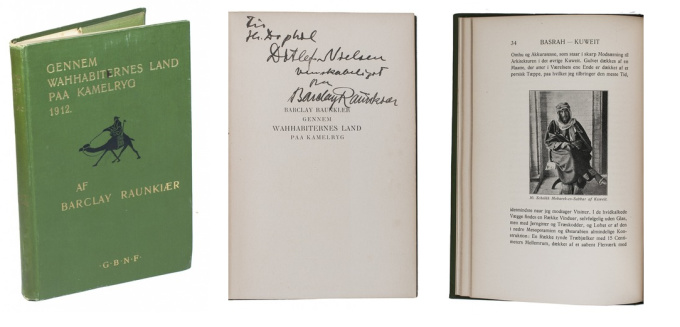











!["SKIMMING THE WATER [MENAGE A QUATRE]" Signed book plus small artwork by LAWRENCE WEINER](https://media-2.gallerease.com/images/442bfd5f-fc31-4e18-a2fa-ee0c08eade64/350x350/skimming-the-water-menage-a-quatre-signed-book-plus-small-artwork.jpg)














